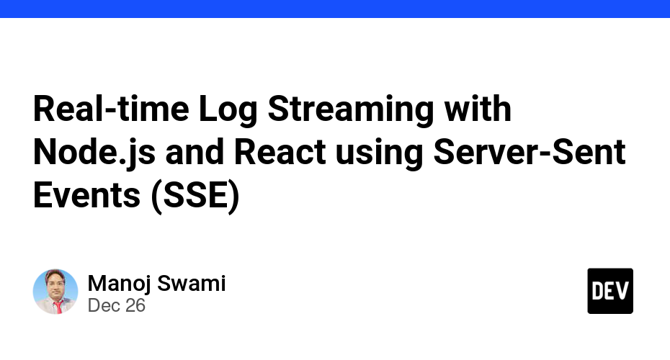Dev
1w
384

Image Credit: Dev
Real-time Log Streaming with Node.js and React using Server-Sent Events (SSE)
- This guide demonstrates how to create a real-time log streaming system using Server-Sent Events (SSE) with a Node.js backend and React frontend.
- Server-Sent Events (SSE) is a one-way, real-time technology that lets servers push data to web browsers.
- SSE is perfect for scenarios where you only need to send data from server to client, like log streaming as it is simpler than WebSockets to implement and works automatically with HTTP/HTTPS.
- The Node.js backend log streaming service has to set up with headers for SSE.
- SSE server must follow a specific message format, which includes the following details → tells the browser it's a message payload.
- The React component displays streaming logs and has to create an SSE connection which handles incoming messages, errors, and cleans up on unmount.
- It provides real-world usage examples such as processing large files and database operations.
- Tips and best practices include Memory management, Performance optimization, Enhancing User Experience, and Security Measures.
- Server-Sent Events are simple to implement, provide real-time updates and work automatically with HTTP/HTTPS, making them perfect for scenarios where data is only one-way.
- Remember to handle errors properly, manage memory usage, and consider security implications while implementing this in a production environment.
Read Full Article
23 Likes
For uninterrupted reading, download the app